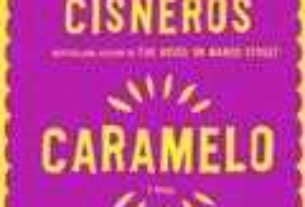I’m not sure how come I’ve lived in Mexico these last seven years and never got around to reading this rather well known account of life in Ajijic a good half century ago. This seems to be about the time that the earliest arrivals from up north “discovered” the place and decided to stay. And this is a particularly well written description of what those times were like.
As the legend goes, Dane Chandos came here and made his house into an Inn and, in the process, met a mixed bag of people who also visited the place, which the author describes as “nestling between the lake and the paws of the mountains.” And the visitors themselves seem to be so different from the retiree couples from Toronto and Minnesota who arrive here in droves these days. For example, there’s a full-blooded Mexican Army general and an interesting French countess who arrives alone, wearing a mink stole who makes extravagant demands on the establishment. And there’s a pedantic German professor who feels compelled to explain everything he encounters in scientific terms….and many many others.
I should explain, of course, that I’m aware that there is no such person as the author, Dane Chandos. He’s really two people.…Peter Lilley and Anthony Stansfeld. Lilley is the one who built the house and turned it into an inn and lived here for 40 years. Stansfeld is a professor of art history who visited frequently and collaborated on the book. Peter Lilley actually wrote three books about this area, the first one being “Village in the Sun” four years earlier, with Nigel Millet.
For someone living here today it’s rather upsetting to see how much the lake is featured in this narrative. Lake Chapala was obviously much more a presence in those times than it is today when it looks like a permanent fixture on the endangered list. One of the characters actually arrives in Ajijic by boat. Imagine that today! He’d have one heckuva long walk from the water’s edge to the village. And there are frequent references to boat rides and swimming in the lake and the abundance of fish and bird life, which I don’t believe would be part of a similar account written today. (Editor’s Comment: As of 2008, the lake has made a full recovery).
The Mexicans Chandos writes about seem so different, too. They are much more folksy and rural than the ones we meet today. Or perhaps it’s just Chandos’s way of writing. He goes for a boat ride to nearby Scorpion Island. A local man rows him out there, a man who is scornful of power craft. “I carry the gasoline in my arms,” he says when asked. On another occasion, a servant catches Chandos in a rare relaxed moment. “Señor,” he says, “why don’t we close the inn and it would be nice again, like it used to be?” “The inn makes money,” Chandos replies. “Without that how would you be paid?” “The centavos don’t call my attention – except sometimes,” is the response. “I am content to work just for my tortillas, and maybe a new shirt or a sombrero now and then….” I wonder how often you would hear a response like that these days.
It’s a pleasure to read such glowing descriptions of the landscape as one finds here. The author obviously loved the country. This shows in so many ways: from a simple straightforward description of a sunset over the lake, to an account of a drive through beautiful pine forests and alpine villages to Uruapan and then on to Colima to see the volcano.
There’s no mention of anything else going on in the rest of the world as one reads this narrative. And you never quite know what part of what century this is taking place. All of which adds to the sense of isolation, the feeling that this is a kind of Shangri-La that is being described. In fact, even though this edition of “House in the Sun” was reprinted in 1999, it isn’t until you reach the very last page that you find it was written originally in 1949. How different Ajijic is today. Now I can take a short walk from my front gate and find a cyber café, an internet service provider, a well-used gym full of all kinds of high-tech equipment, ATMs, three cinemas, supermarkets, health food stores and a take-out pizza parlor. It has obviously been quite a half century!
There are other differences, too. The word centavos appears frequently in mentioning the costs of various items – rarely pesos. One couldn’t imagine that in today’s inflationary economy. And the rainy seasons seem so much more so. Chandos is describing an entire year in Ajijic and the all-night rains he mentions simply make this dried-out reader very envious.
In my humble O: Good one! Now I’ll have to find myself a copy of “Village in the Sun”.
House in the Sun
By Dane Chandos, 1949. Reprint by Tlayacapan Press, 1999
Available from Amazon Books (sometimes)



I lived across the street from the old posada in 1973 as a kid. I miss Ajijic.
Mike, I know you are a loyal, long-time reader, and hope you are aware of “Foreign Footprints in Ajijic: Decades of Change in a Mexican Village“, my attempt to explore how foreigners have influenced (for better and worse) Ajijic since the start of the twentieth century. Regards, Tony.